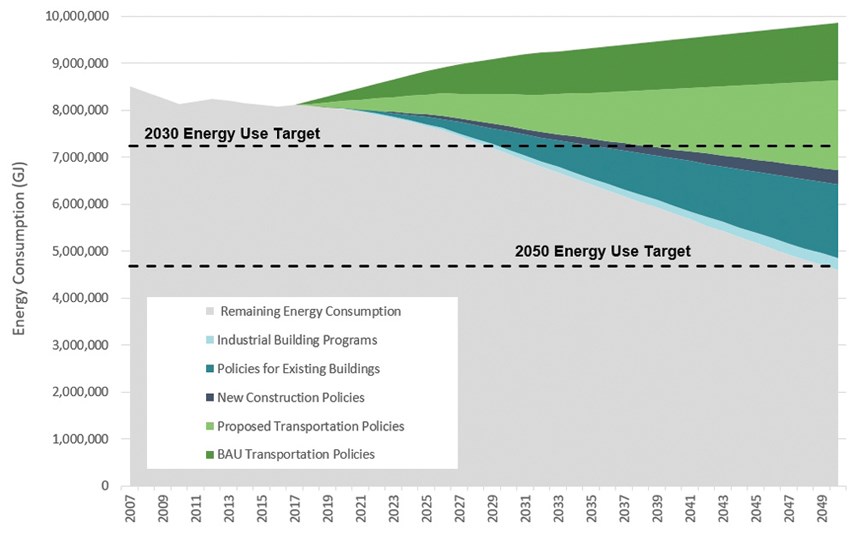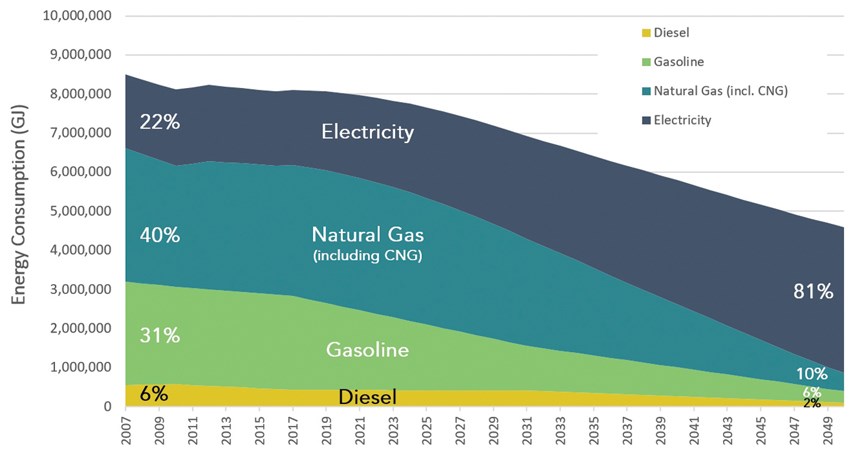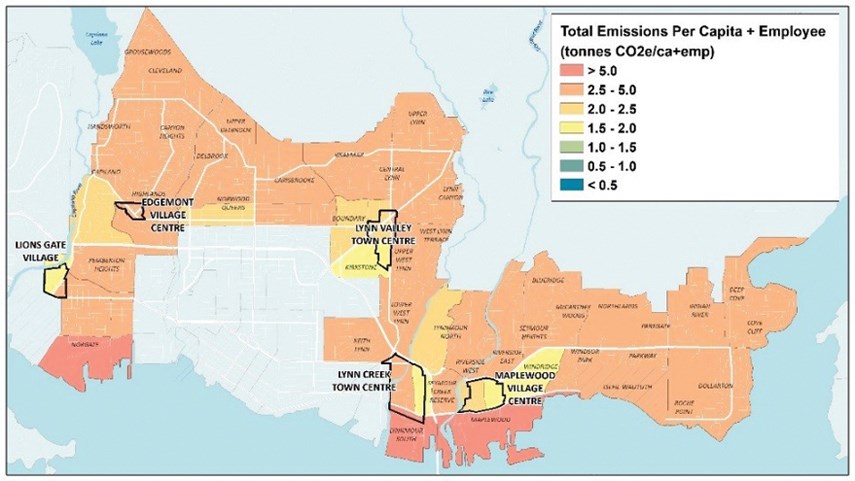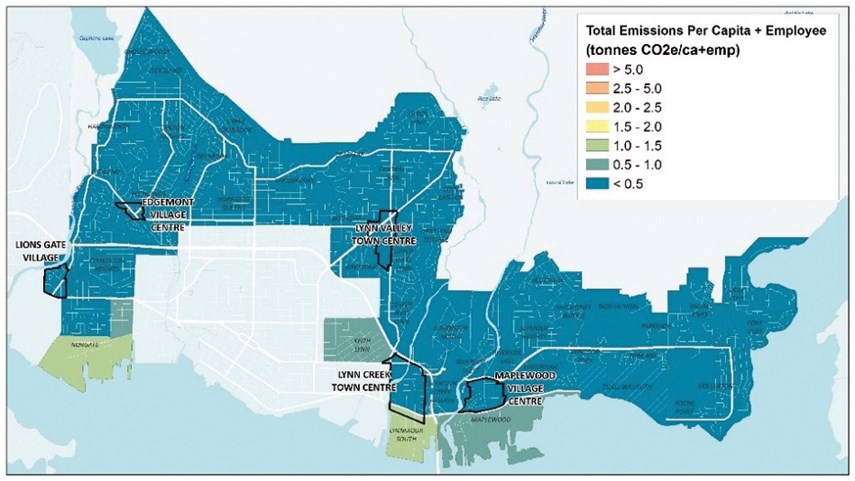District of North Vancouver council has approved a community energy efficiency and emissions plan that aims to drastically reduce energy consumption and greenhouse gas emissions in the municipality while moving to zero use of fossil fuels.
The plan sets a target of reducing greenhouse gas emissions to 45 per cent below 2007 levels by 2030 and 100 per cent below 2007 levels by 2050. It also calls for a cut in energy consumption to 15 per cent below 2007 levels by 2030 and to 45 per cent below 2007 levels by 2050.
The targets set by the plan are larger than either the federal or provincial governments have signed on for.
But Coun. Megan Curren said she doesn’t have confidence in senior governments to take needed action to curb climate change.
“This is the most important work we can do,” she said at Monday’s council meeting where council voted to adopt the plan. “. . . This is what every climate scientist says we should do.”
The high-level plan calls for action in four key areas, including reducing the number of vehicle trips, improving energy efficiency for new and existing buildings, reducing waste sent to the landfill, and retaining tree canopy and other natural ecosystems in the district.
Among measures being considered are: support for road or bridge tolls under the heading of region-wide mobility pricing, accelerating adoption of electric vehicles, reducing parking requirements for new developments and retrofitting buildings from use of natural gas to either electricity or heat pumps, possibly through the use of property tax incentives. It could also include signing on to higher levels of the voluntary B.C. Energy Step Code.
Council has also asked staff to report back on the impacts of moving toward zero fossil fuel use in development projects in the district.
“We’ve heard the public places a high priority on climate action,” said Tina Atva, manager of community planning.
Without any action, a staff report warned carbon emissions would likely increase 19 per cent in the district by 2050 and energy consumption would likely shoot up by 16 per cent.

According to the report, the vast majority of both greenhouse gas emissions and energy consumption comes from use of gas and diesel in passenger vehicles and heating of residential homes with natural gas.
The climate and energy plan also contemplates taking into account “upstream” greenhouse gas emissions, such as the carbon and energy used in producing concrete for building.
Without that, “We’re missing half of the equation,” said Curren. “So I think that’s really important.”
The cost of implementing the plan is estimated at about $200,000 annually, not including staff time.
Council has asked staff to report back next year with more details on the impacts of putting measures in place before moving forward on them.
But the devil could be in the details.

Curren pointed to the number of heavy greenhouse gas emitting industries in the district, including rail lines and port businesses, which the municipality has no jurisdiction over.
Coun. Lisa Muri warned it will be important for council and the community to understand exactly what’s being proposed, especially as it impacts the district budget.
Mayor Mike Little also voiced concerns that being very aggressive with carbon targets could significantly limit the municipality’s ability to address other priorities.
“My concern with this very principled stance is it creates a situation where we don’t have the ability to respond to other matters pragmatically in our community,” he said.
Little added he doesn’t think the municipality has the power to force private owners to retrofit their buildings.

Several members of the public weighed in on the plan at the beginning of the council meeting.
Morag Keegan-Henry of the environmental group Force of Nature applauded the district for adopting the plan, as did resident Sandy Goldie.
“We need to move as rapidly as possible to address climate change,” said Goldie.
Roger Bayley, an engineer who is part of a group advocating for zero emissions, warned council that energy consumption through hot water heating and summertime cooling are issues that also need addressing. Bayley added signing on for the highest levels of the energy step code could also “drive up the cost of housing significantly” without a lot of net environmental benefit.




